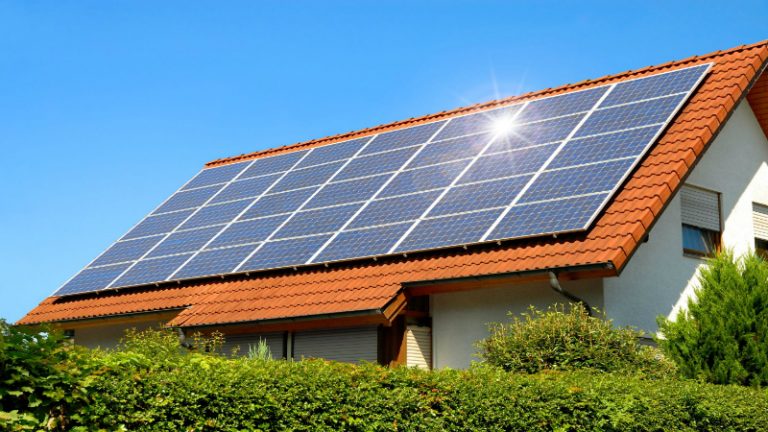Solar panels are the term we usually use to refer to one rectangular unit of a solar cells. In reality, the proper term is a solar module. A solar panel is actual two lines of solar cells witin a solar module. Still, saying “solar panels” has become the accepted term. Within these “solar panels” or “solar modules” usually rest 60 solar cells. This has been the conventional size of a solar module for some time. The average size of these units is a little larger than 5’x3’ and about 40 pounds. Over the years, we have seen the efficiency of solar cells in these units rise to higher than 20% efficiency. You will know the look of the solar cell by the unmistakable squares of blue, dark blue, or black that make up the face of the solar panel.
In the last few years, solar distributors have started introducing 72-cell solar panels. 72-cell solar panels are just that, a solar panel filled with 72 solar cells. This usually means that the footprint of the solar panel is larger than a conventional solar panel. The 72-cell solar panel will not be a more efficient solar panel than its 60-cell counterpart even though it will be of a higher wattage. It is important to understand this difference when being proposed with a 72-cell solar panels. When a solar company shows you a panel that is 350 watts at 72-cells and another has 300 at 60-cells watts, it is possible that the 300-watt solar panel is actually of a higher quality.
So when does it make sense to use a 72-cell solar panel and why? 72-cell solar panels can often have a lower price per watt due to the economics of scale. It is a bigger footprint but still just one back sheet, one junction box, etc. It is also often made with poly crystalline cells which drive down cost. Many commercial solar applications will include 72-cell solar panels. This will allow for a lower price per watt for the business owners where economics is most important. For a homeowner, the 72-cell solar panel can best be suited for the outdoors like on a solar ground mount. They may be able to be stacked in portrait two high or 4-5 high landscape. Also, since they are on the ground, the need for high quality aesthetics may be less important. With some of the added costs that come with a solar ground mount, the 72-cell solar panel can help balance costs. NJ solar panels on the ground are many times 72-cell panels.
NJ solar panels on the roof can also use 72-cell panels when the application is right. For example, it is common to stack the panels in portrait on a roof mount. Lets say the 60-cell solar panel is 5 feet tall and the available roof space is 18 feet high to install solar panel. In that case there is an extra 3 feet left over. If the 72-cell solar panel is 6 feet tall then this allows for an extra 36 cells per row of solar panels by taking advantage of that extra bit of space on the roof.
72-cell solar panels have their place in New Jersey. For the most part installers will recommend these for ground mounts, commercial installs, or on a roof space that might have a bit of extra space available. Be sure to check with your installer on the actual efficiency of the solar panels in your proposal to be sure whether or not that bigger panel is a better panel.

